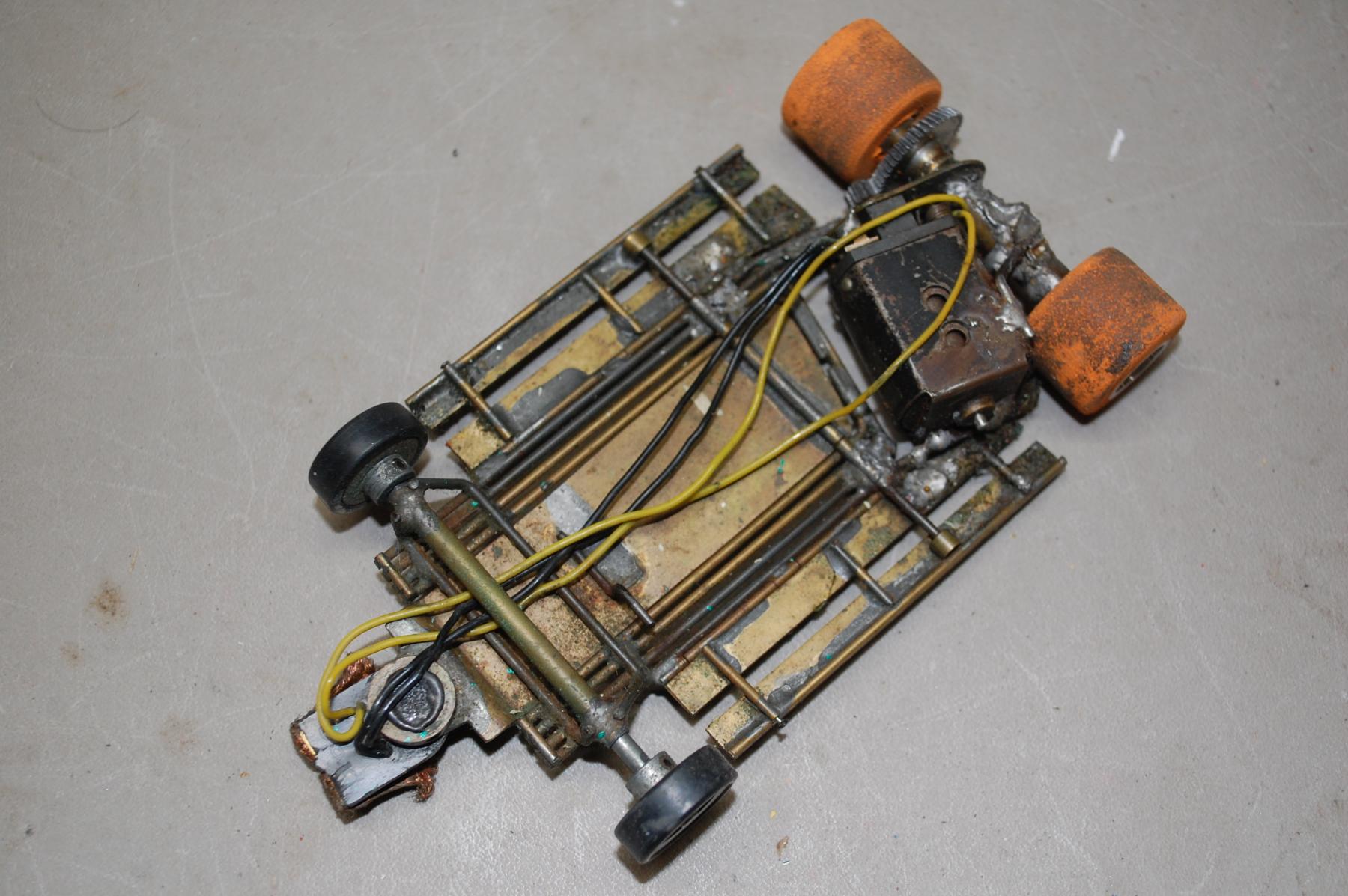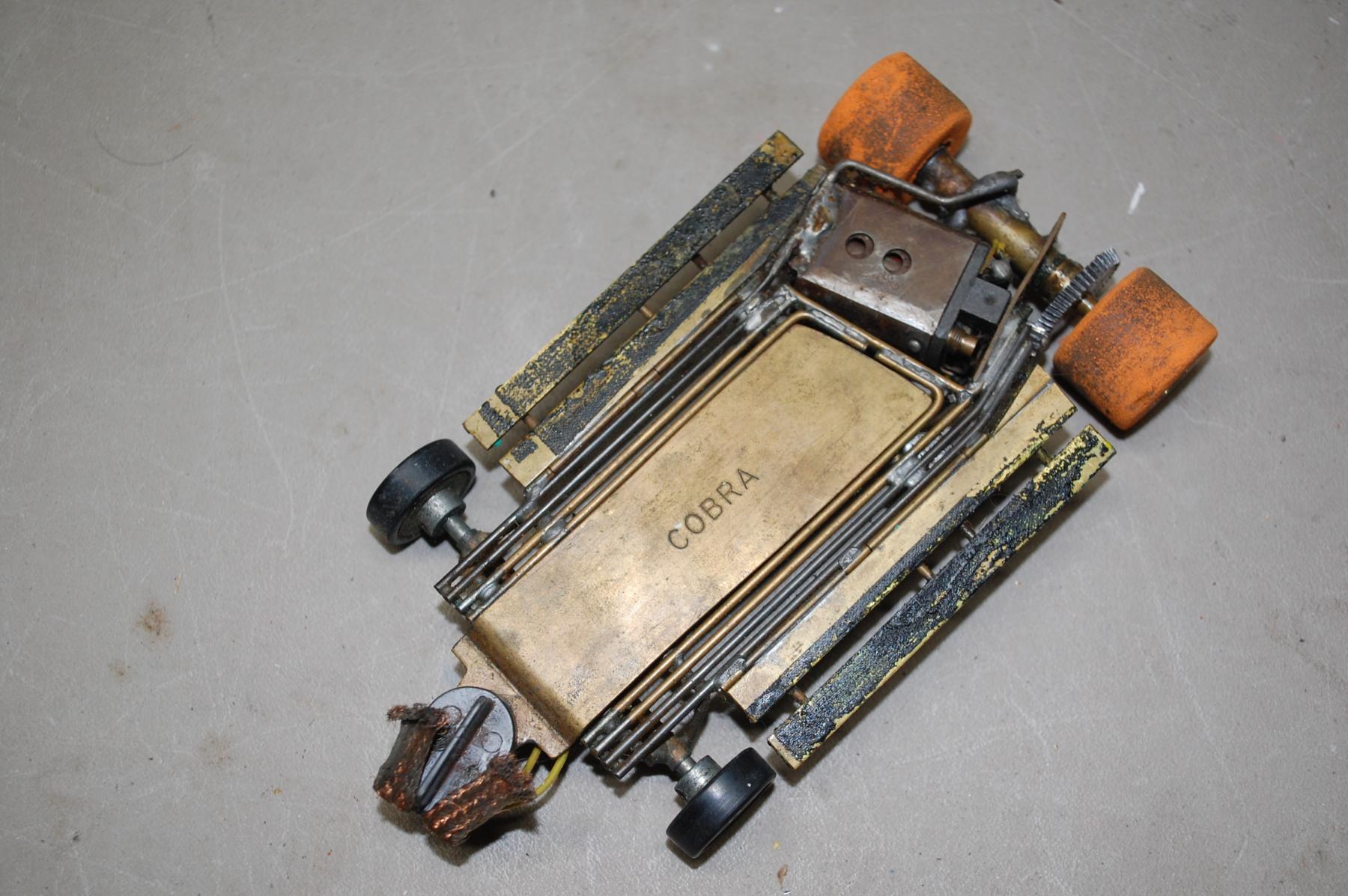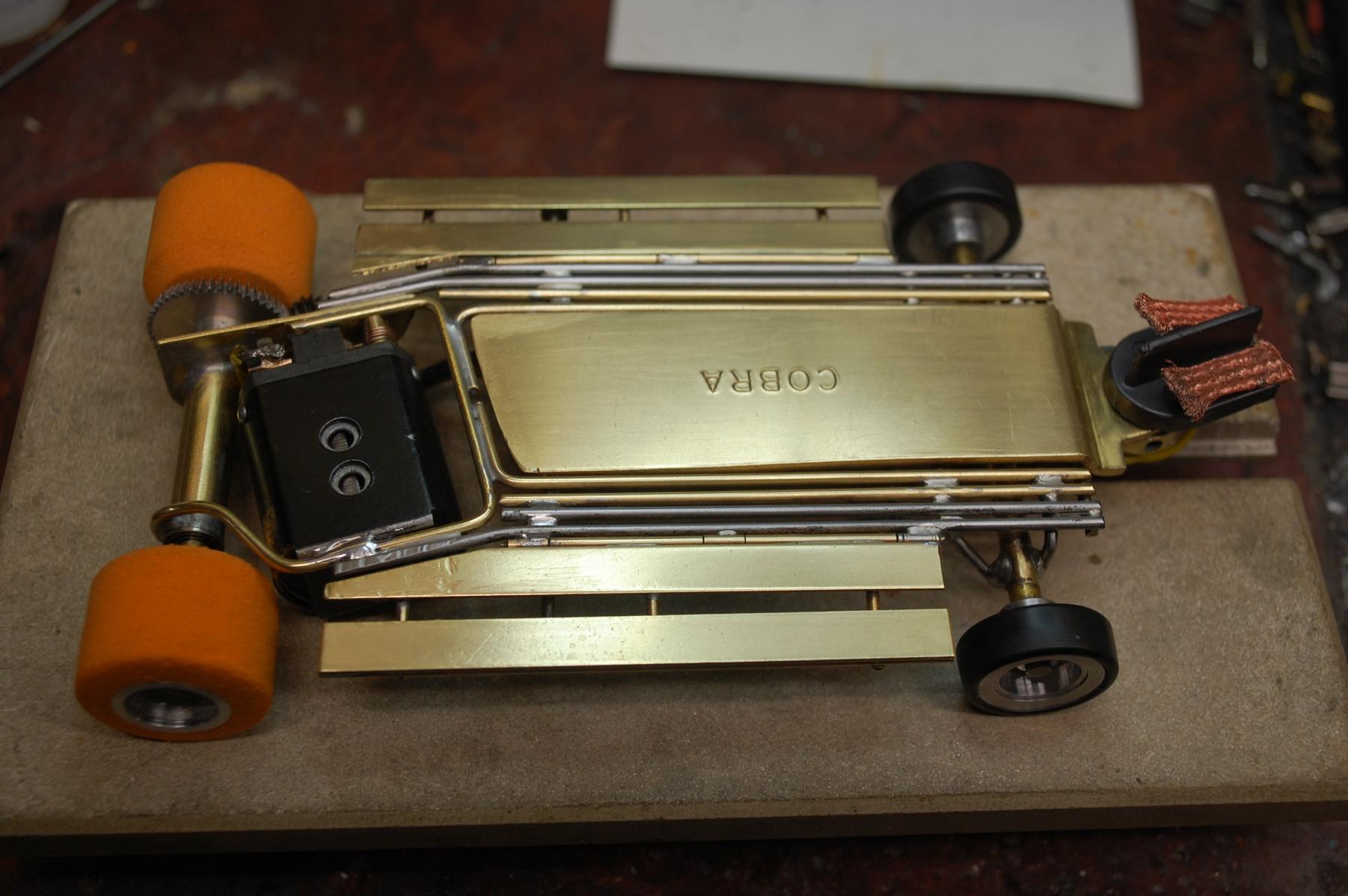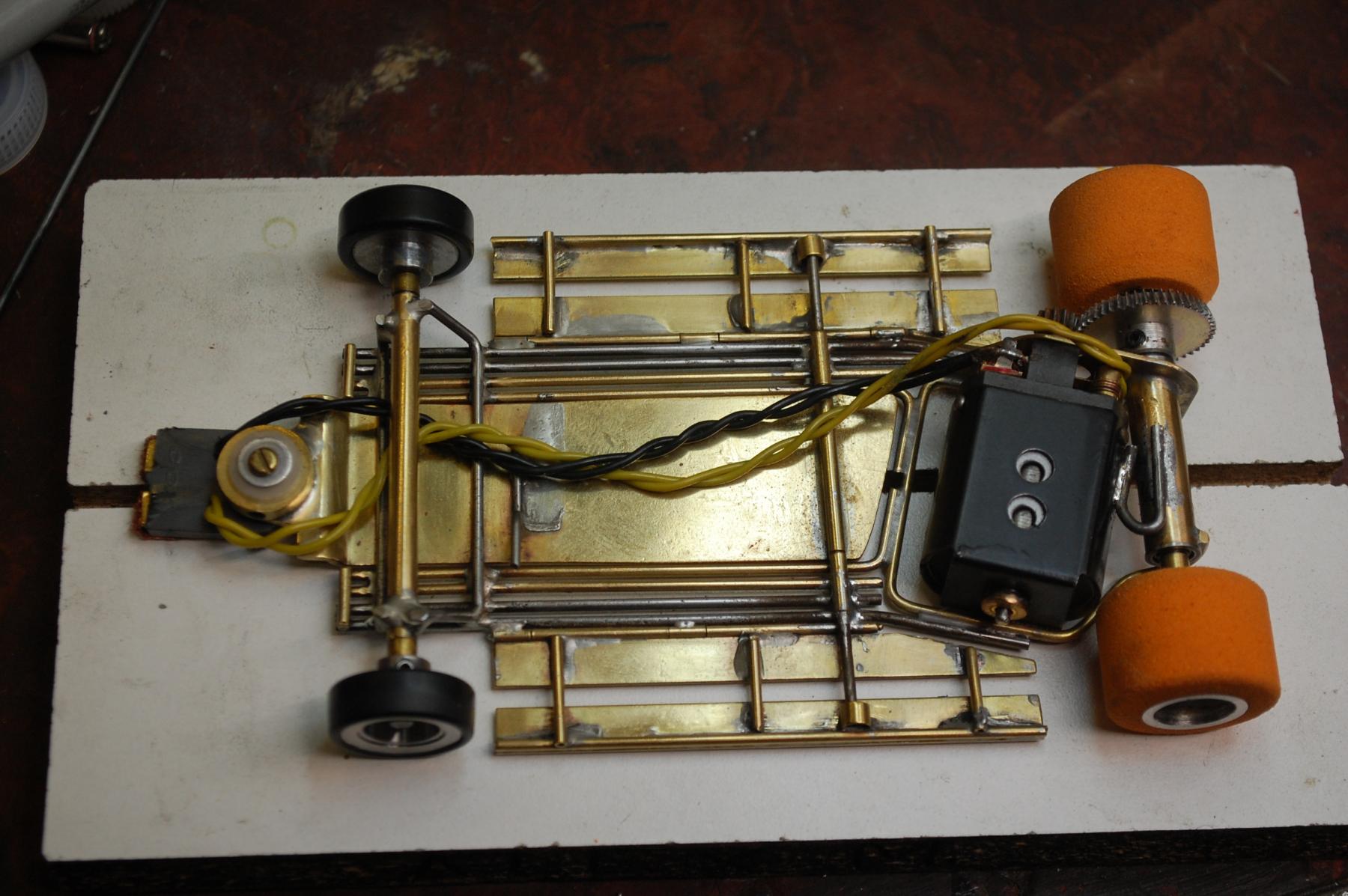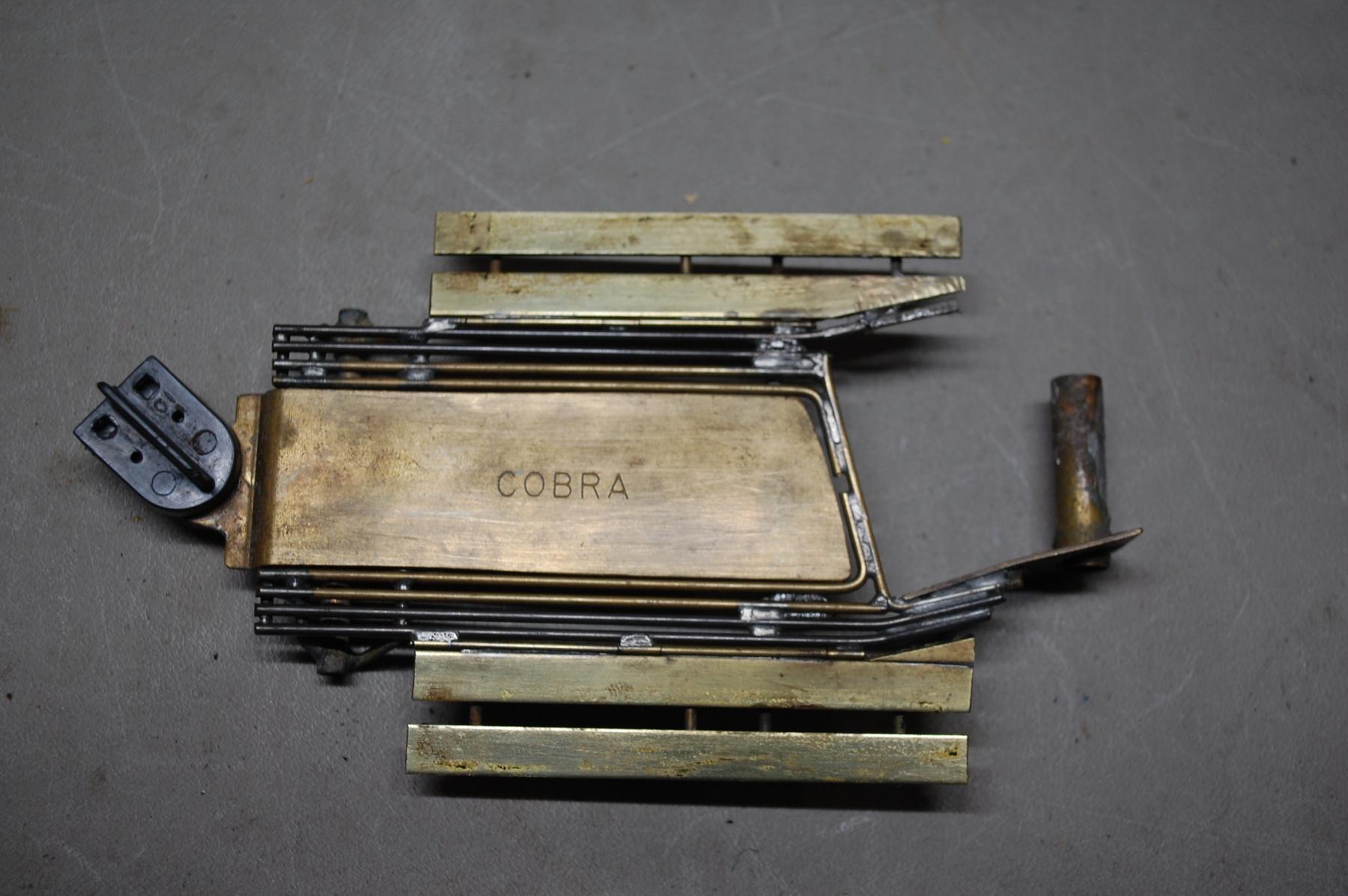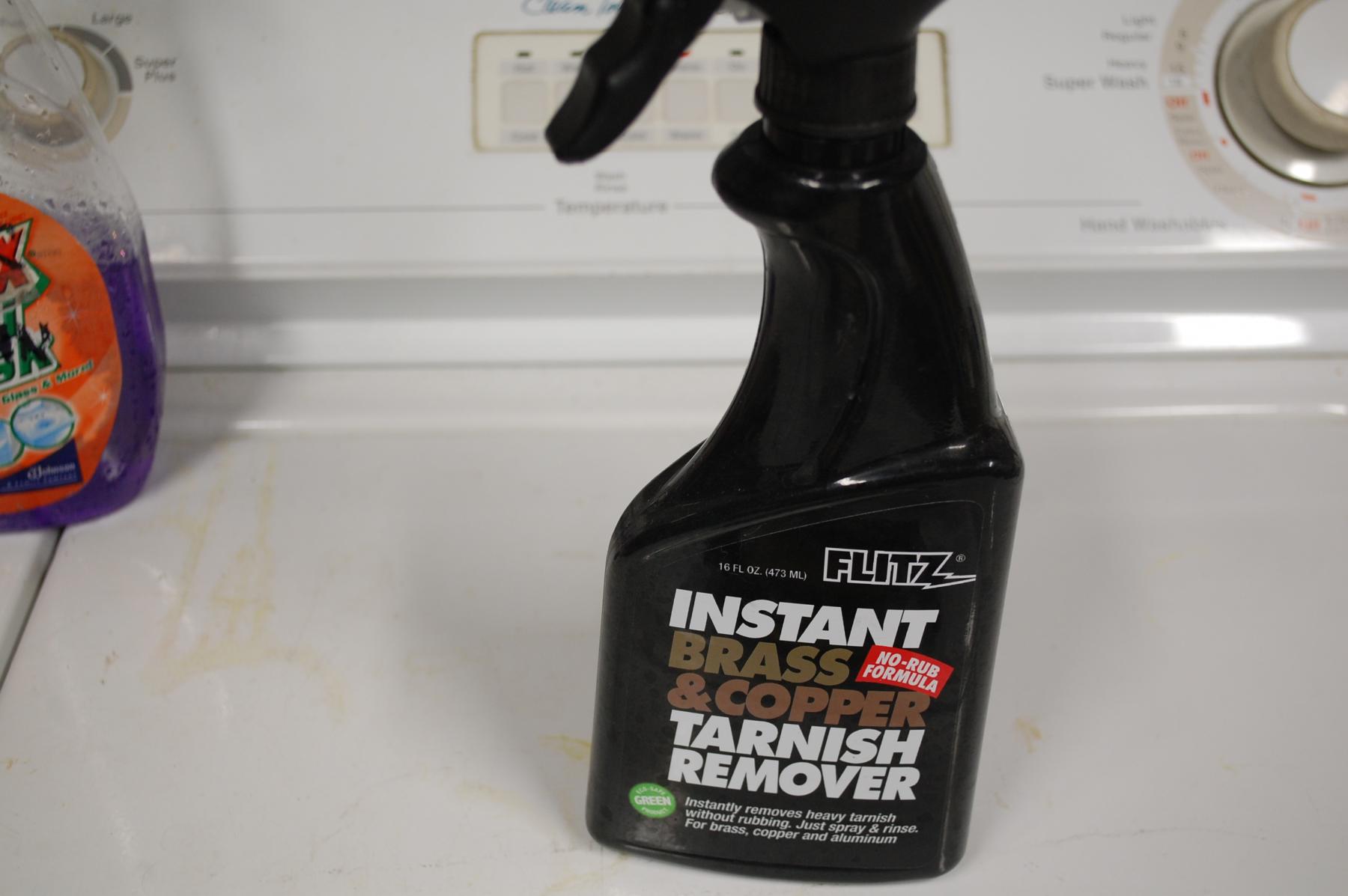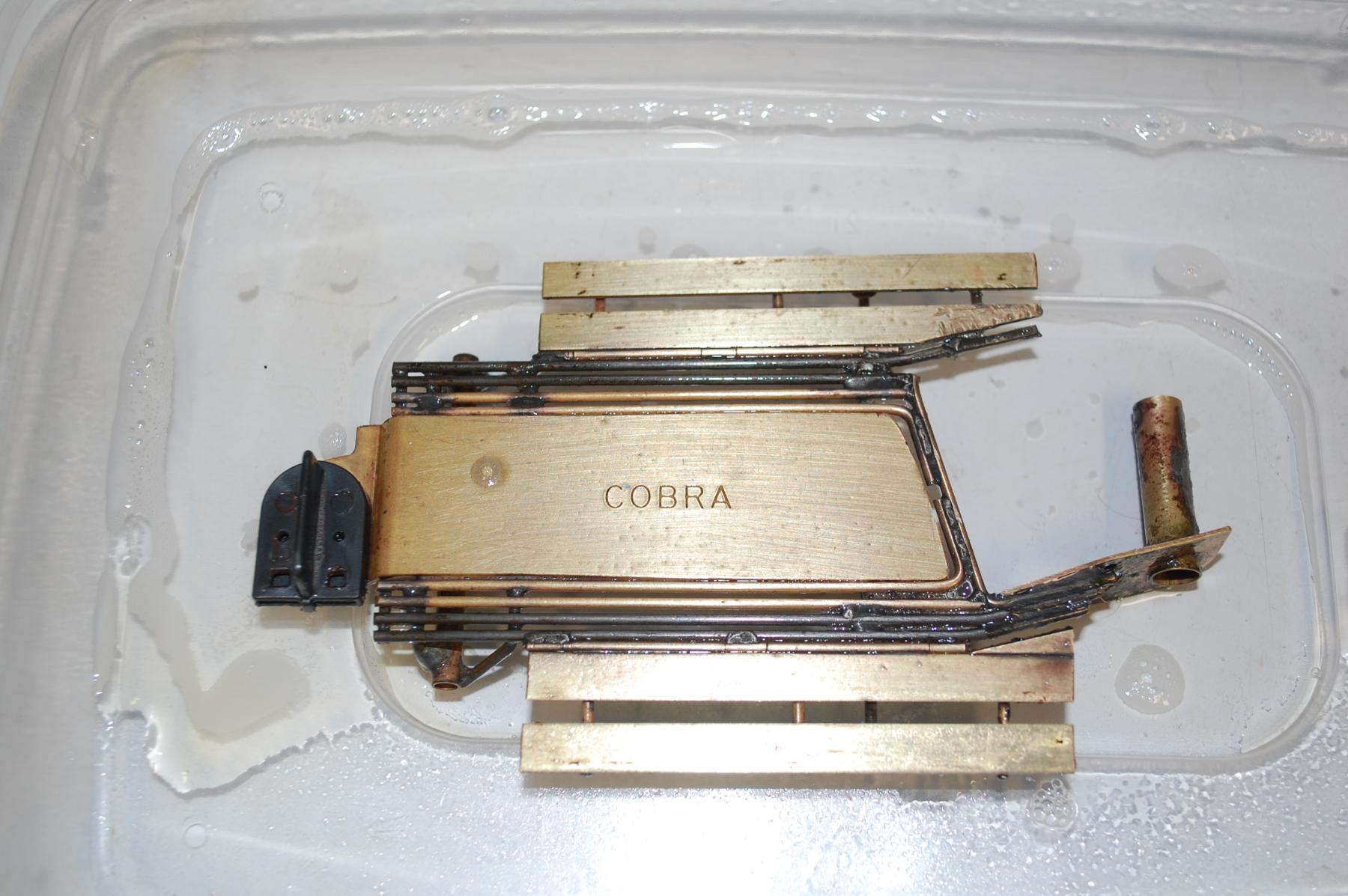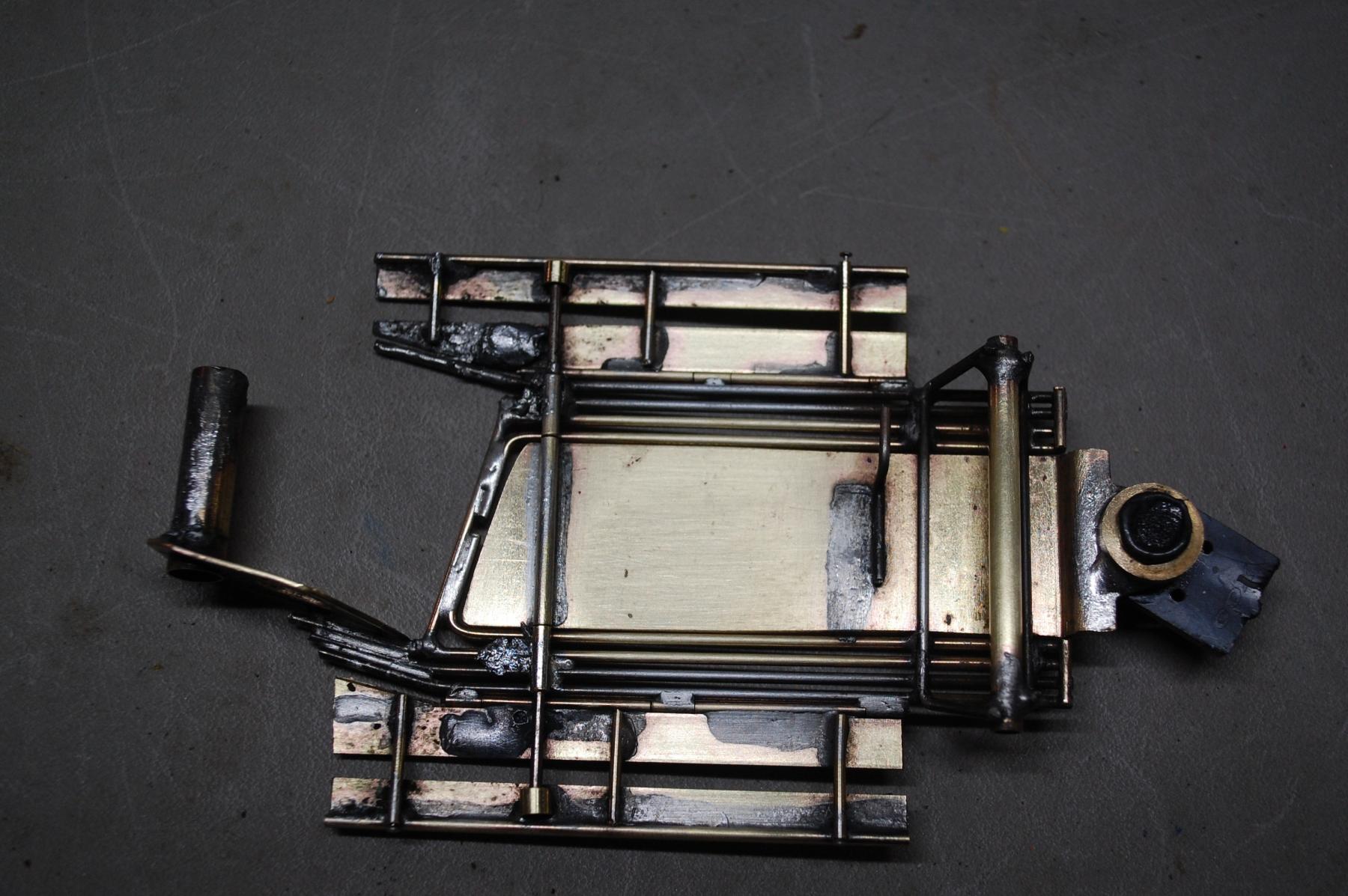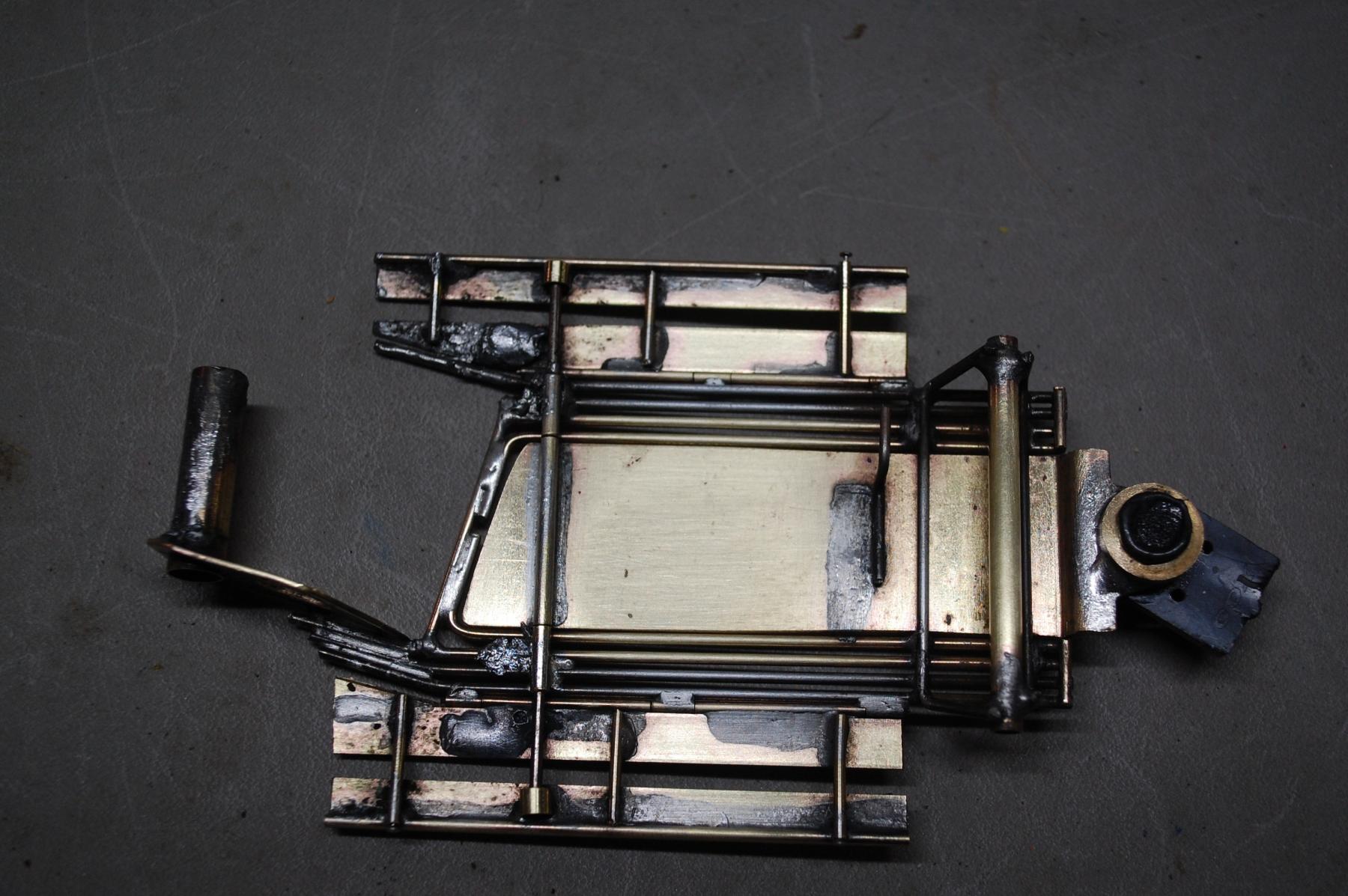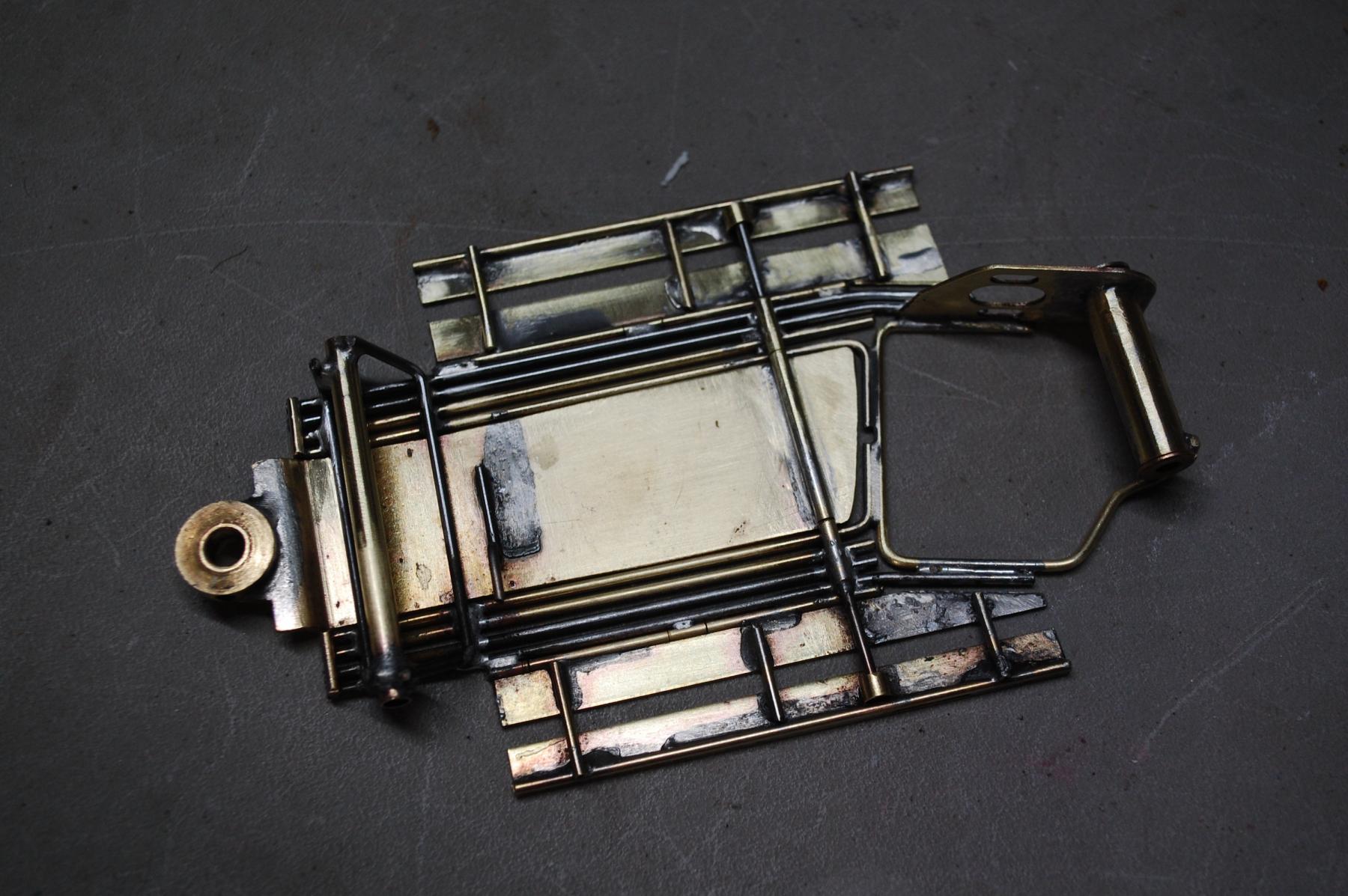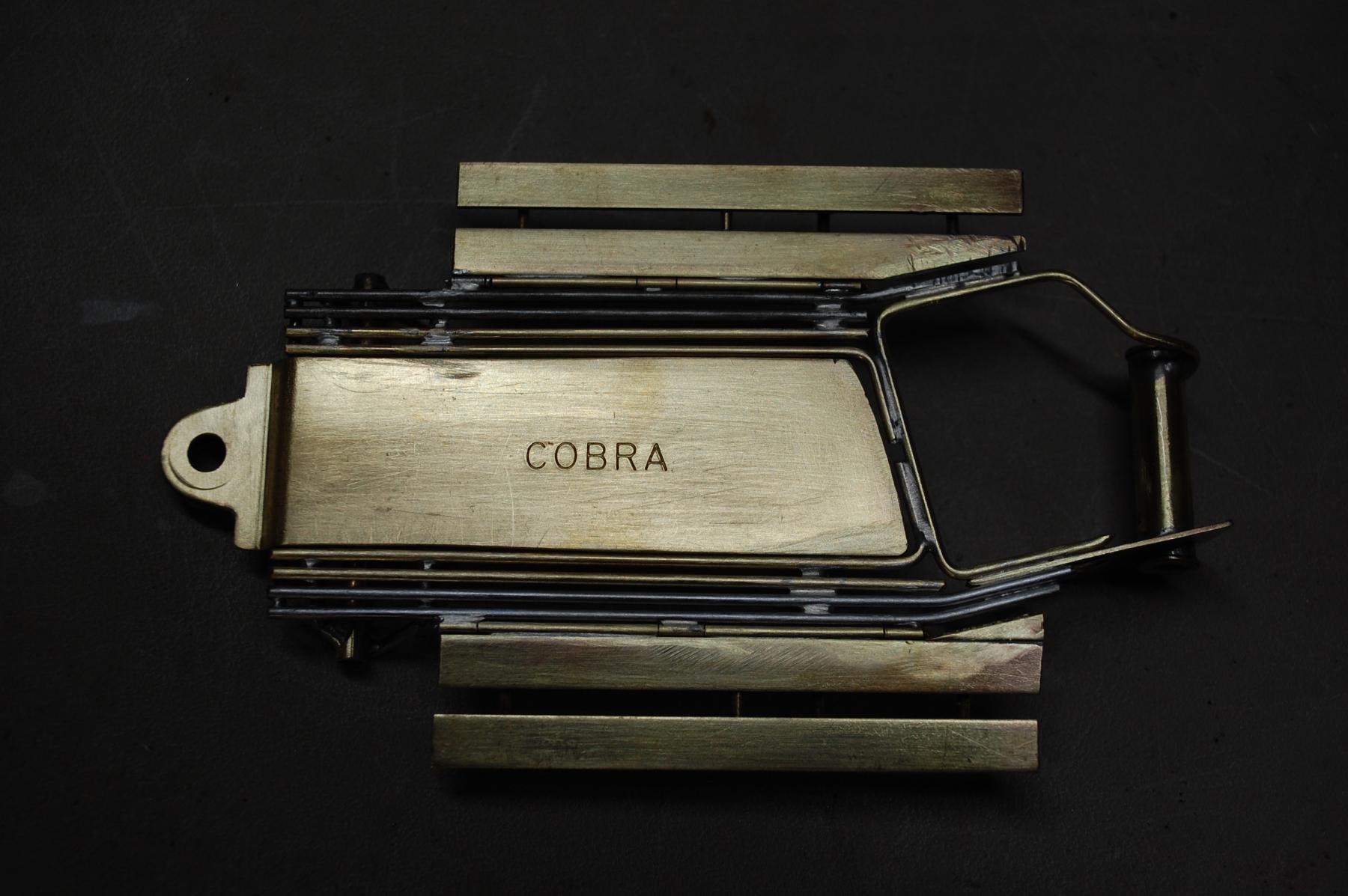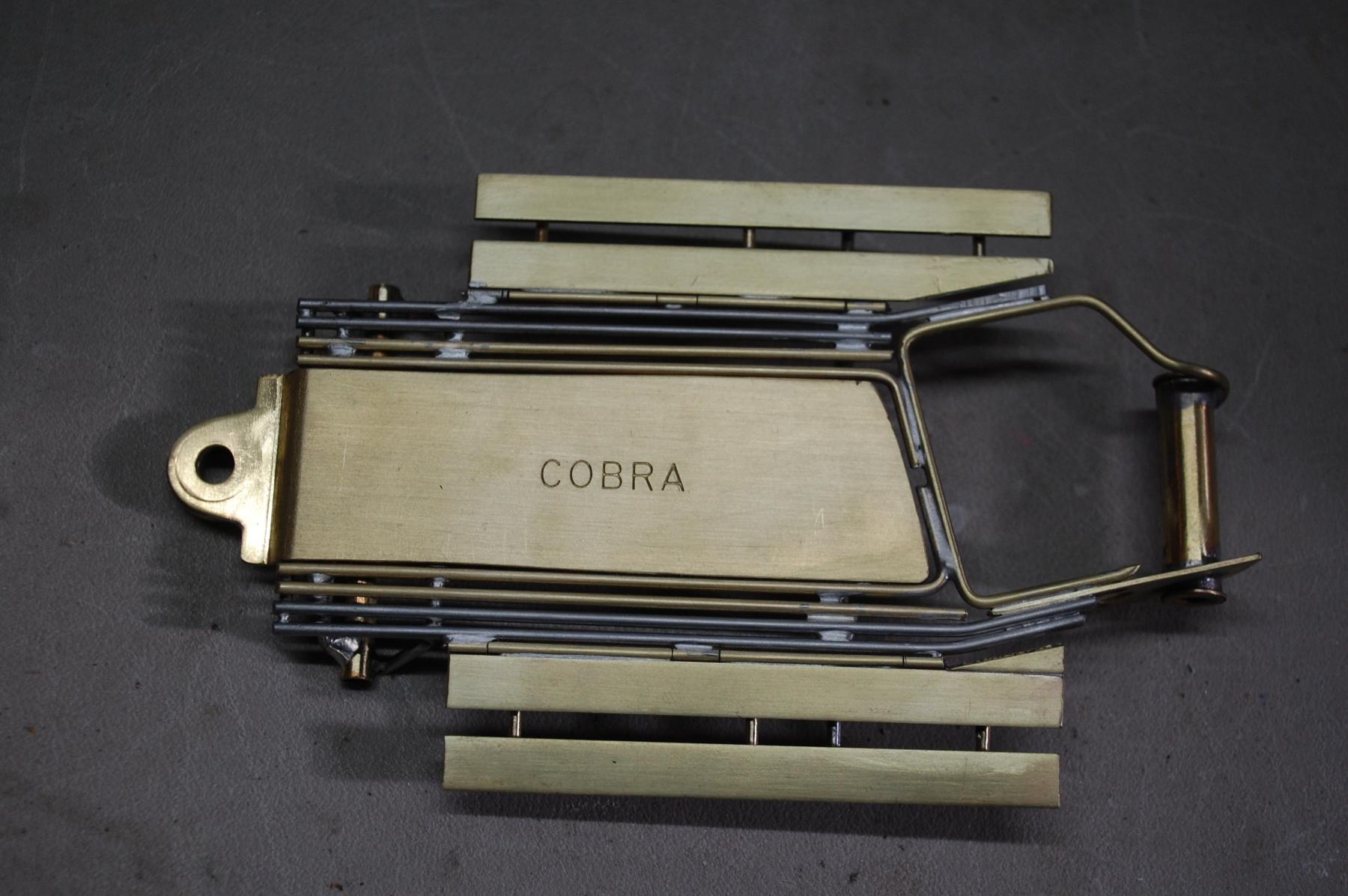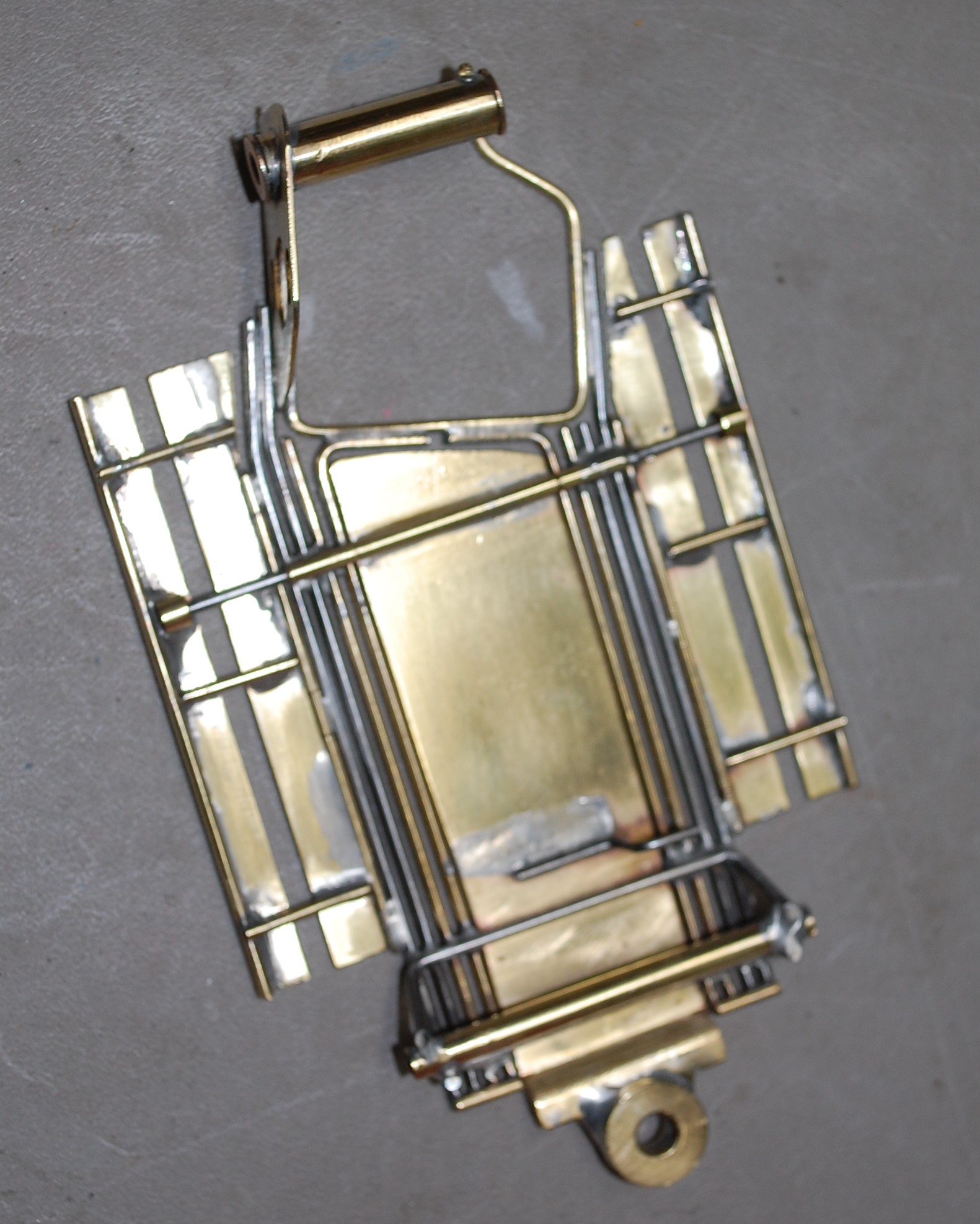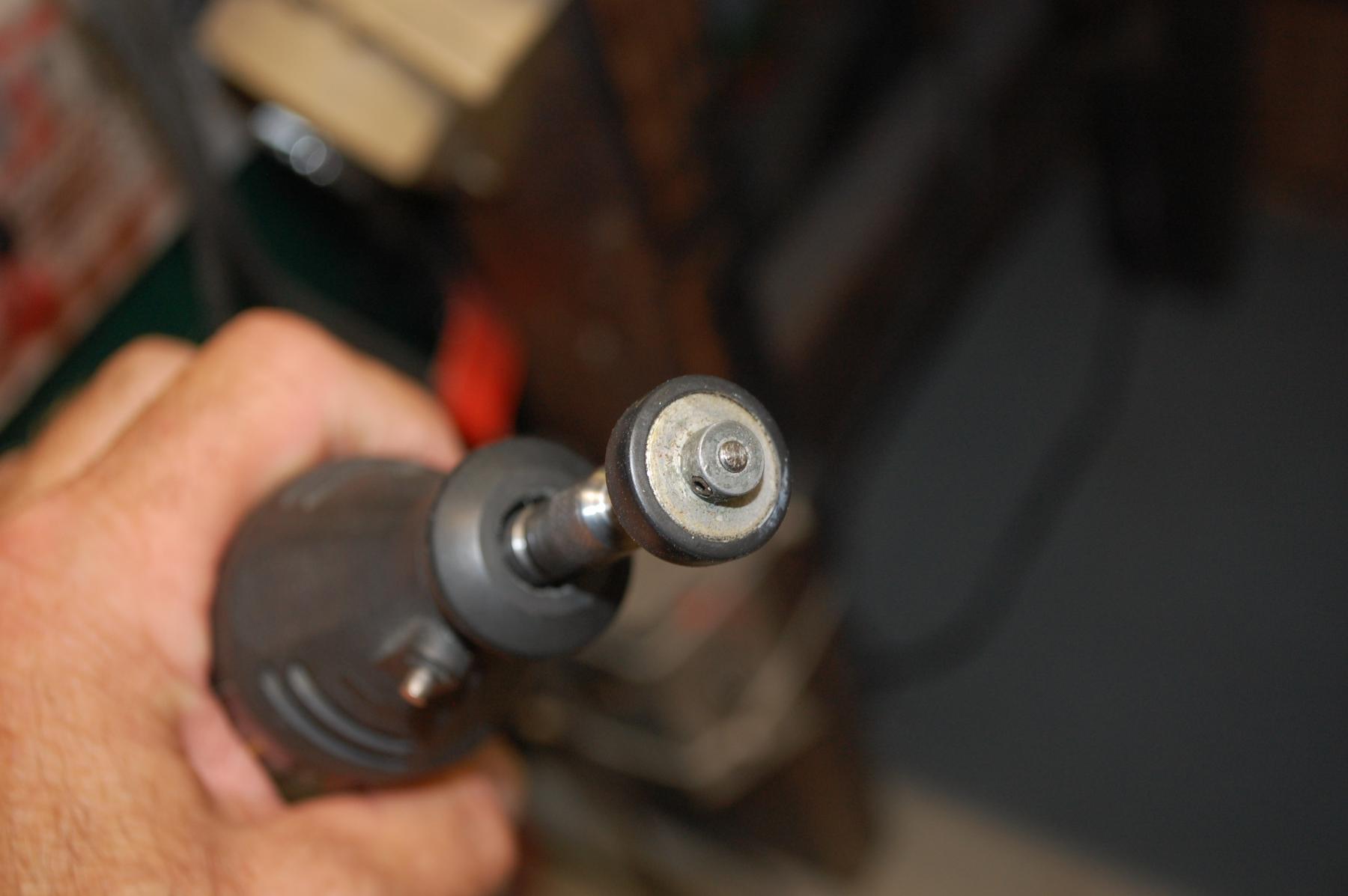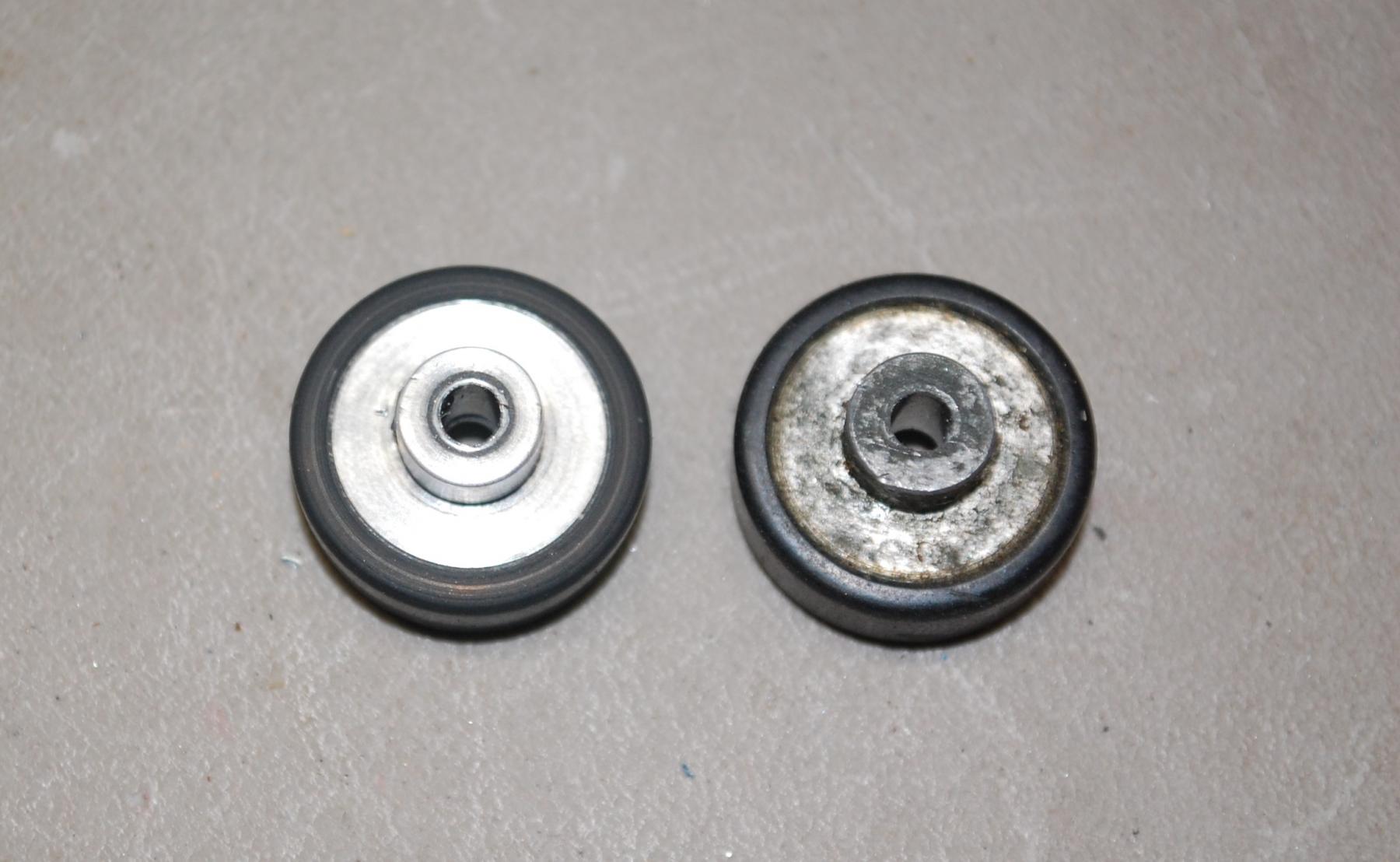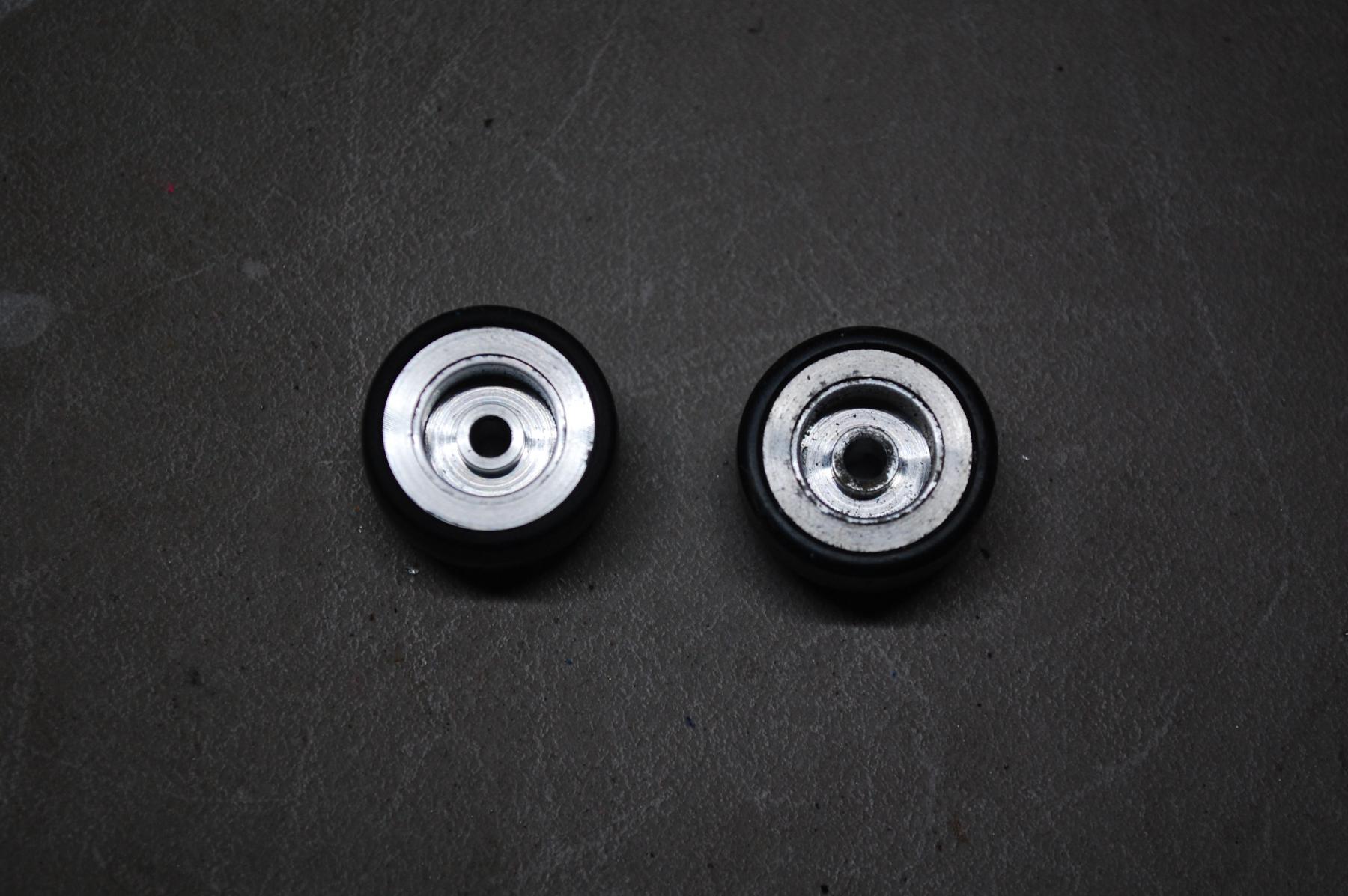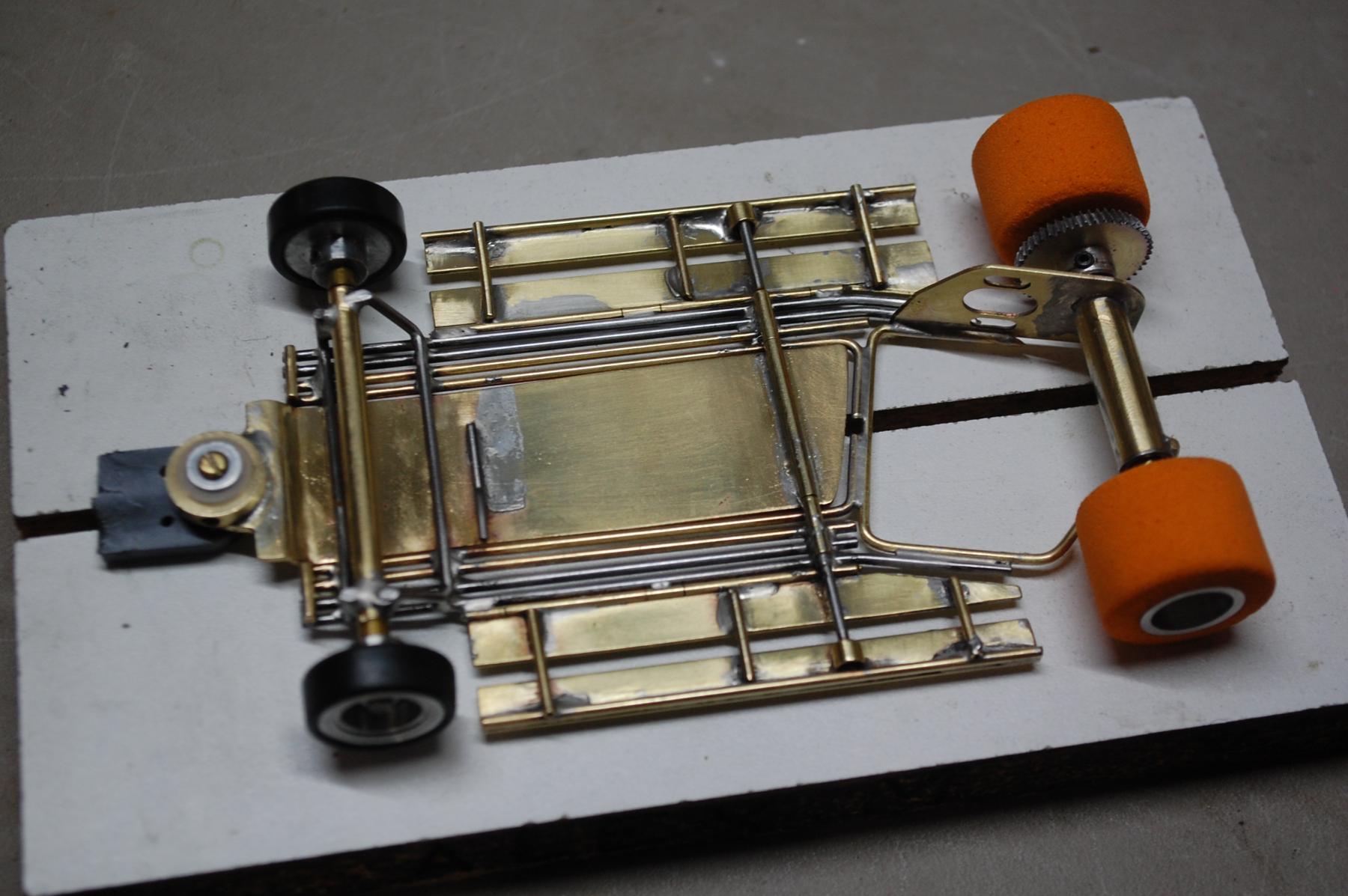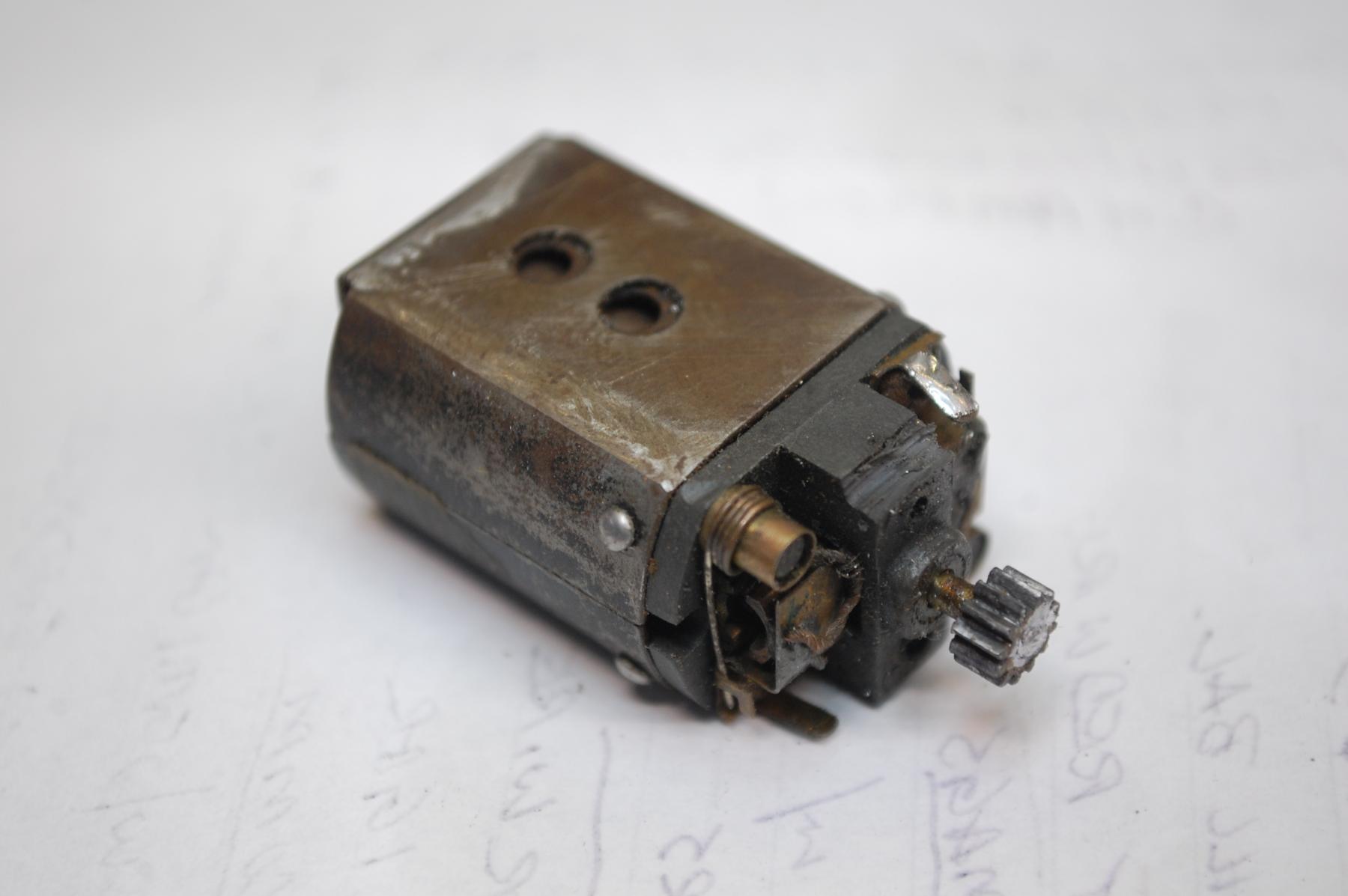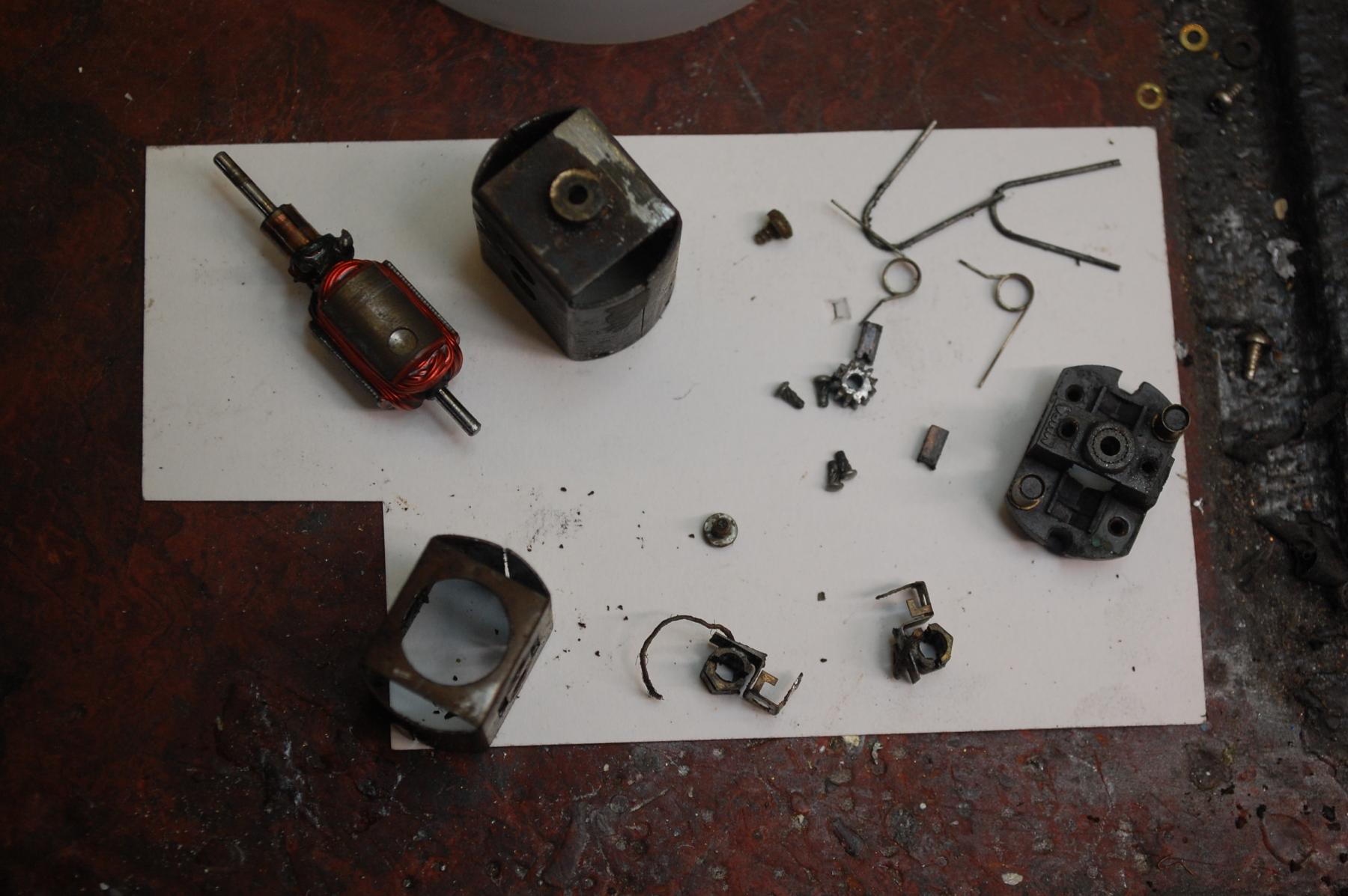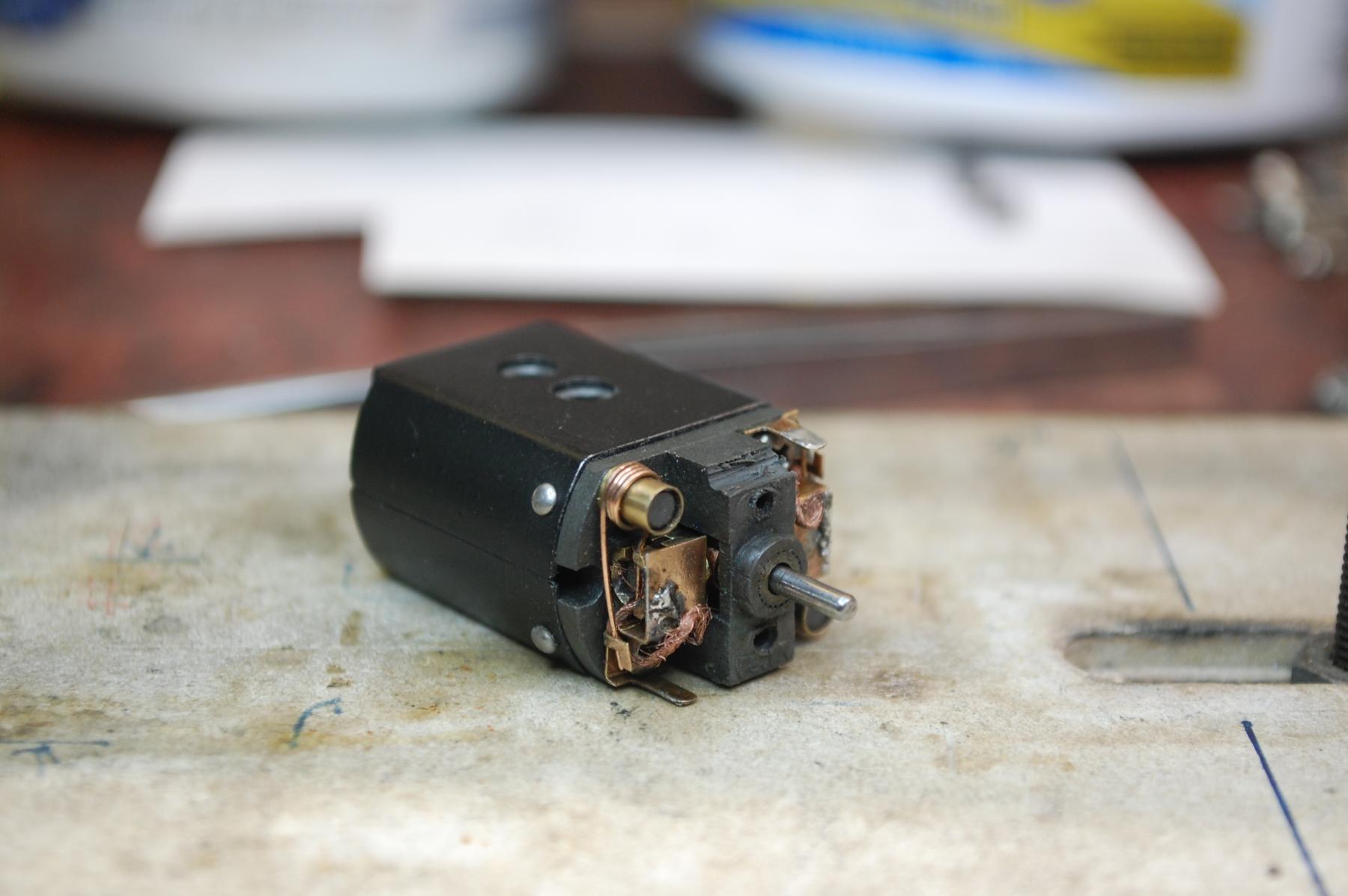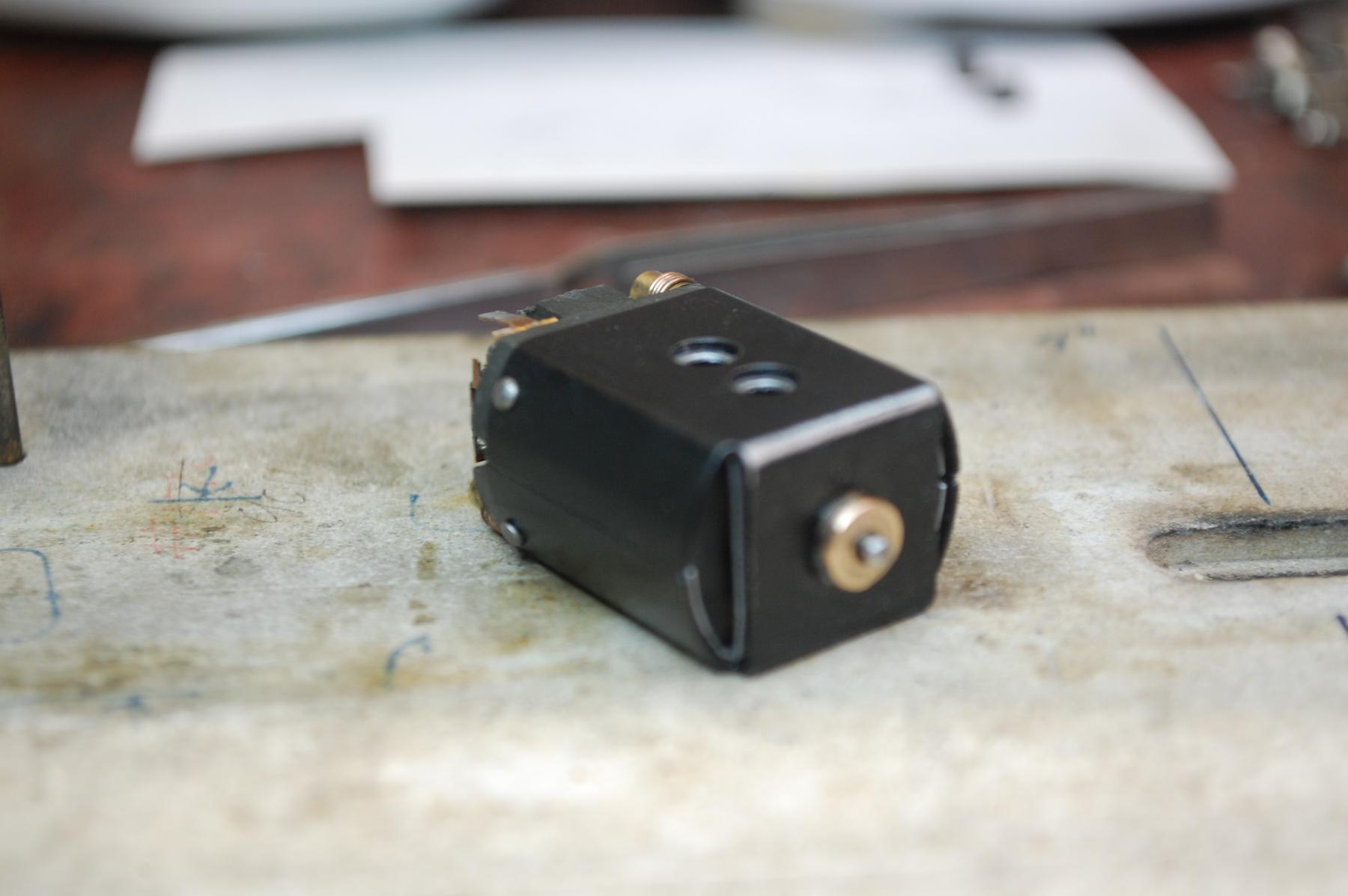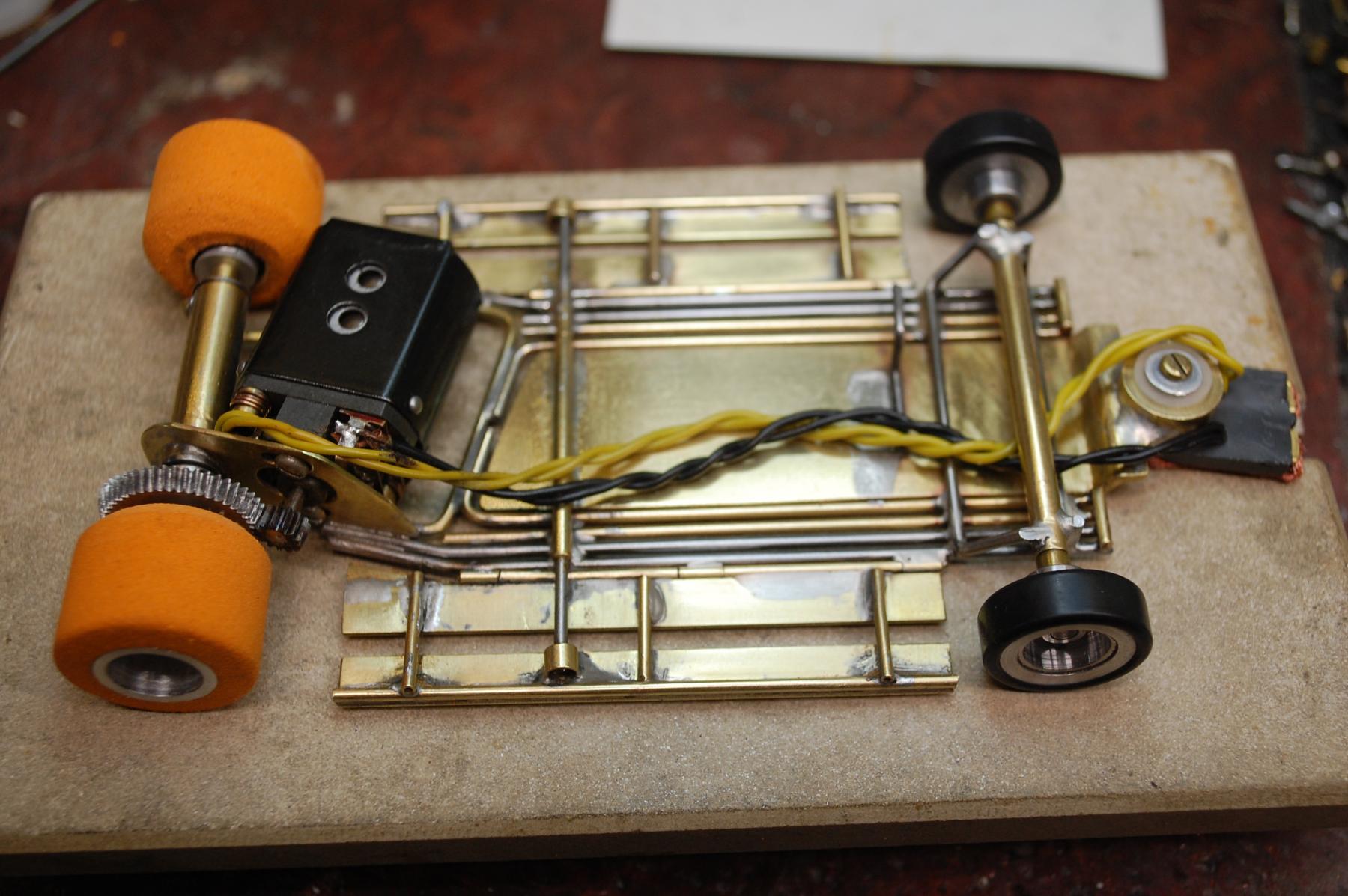Looking at the second and third photos, before and after restoration, it appears the chassis originally had a piano wire main rail that went all the way back to form the left rear axle tube support that's been cut off and a replacement brass rod piece that wraps around the motor and provides the left axle tube support is now in the restoration. The previous piano wire rail (could this have been the Cobra main rail?), is now shortened to the the motor box and solders to the new brass rod motor box piece. If this chassis were really going to be used, that new brass rod piece is not going to make as sturdy a rear axle assembly, although with the motor soldered into the structure with the new, more substantial axle tube brace may be adequate. In addition to the clean-up, the motor box and rear chassis is also somewhat modified with the axle tube supports moved farther apart (not a bad change). A piano wire piece (or keeping the original main rail) would've been a little more effort to bend for the wider rear axle support stance, but I don't think that difficult in .062 which I'm sure this chassis is using.
Also note that the way this new brass rod motor box wraps to the motor bracket there's a potential short or near short of the bottom motor spring post to the chassis. Again, actually running this chassis could result in some crazy arcing to the track and some damage to the spring and post.
The piano wire drop arm stop has been re-positioned in the restoration and has less rail overlap. At best it looks like it's only marginally catching the inside rail and won't provide a very reliable droparm down-stop.
I see the original side slip front axle arrangement has had brass tube spacers added to eliminate the side slip. Front axle tubes in these chassis were intentionally shorter to allow some side slip to offset the rather poor handling created by the locked front wheel/axle arrangement.




